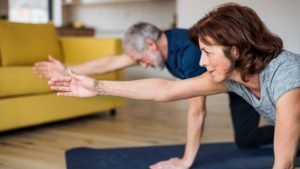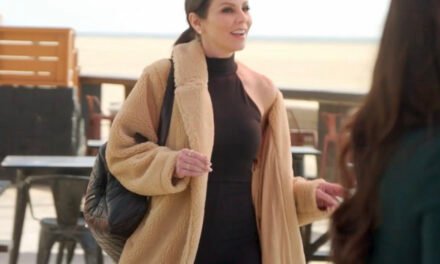
Doing seven hours of specific and
targeted physical activity a week – yup, I can happily say that I’m fit for my
age. Getting fit
after 40 with
my new career as a personal trainer was something I relished after years
working in retail management.
Sometimes, whilst working around the
house or garden, I stop and am literally startled at what a body can do at over
60 years of age. I’m not saying this to boast. I just want to start in a
positive light.
The Past of Fitness
The only time I can remember my mother
ever went to an exercise class or did anything to explicitly improve her
fitness was, unfortunately, when she was in a wheelchair.
It was a locally organized community
group to encourage older adults to do some sort of movement. But, even then, I
remember her poo-pooing the idea that there would be any benefit at all.
Sadly, our parents’ generation grew up
to the set standard of working hard, raising a family, and upon reaching 60 (or
65 for men), retirement. There was little to no deviation from the usual ongoing
chores like eating, sleeping, and having the occasional trip, interspersed with
watching Days of Our Lives.
Of course, our parents aren’t at
fault. The current ‘older’ generation – yes, like me and you – are fully aware
of the meaning of the simple but true maxim “use it or lose it,” but
awareness does not always turn into action.
We are more aware of the benefits of
regular exercise than ever before, but still we make excuses. It is sometimes
hard to get into a habit of physical activity without the immediate
gratification of positive results. Like a lot of things in life, however, if
you keep at it the rewards will be all too evident.
What Does Fitness Mean?
According to one source, fitness is “The ability to carry out daily tasks and routine physical activities
without undue fatigue.” That’s quite uninspiring though.
You could sit around all day and internally
believe that, at any time, you’ll be ready to get up to prepare dinner or chop
some wood. But would that be true?
The above definition easily creates
association with the saying “fit for purpose.” And if something is not fit for
purpose then you might as well bin it.
On another note, we all know that astronauts
are fit people. They’d have to be. Millions of dollars have been spent on high-tech cardio and weight resistance machines that try to keep them fit whilst in
space.
Shockingly, during their stay at the
International Space Station (ISS), astronauts can lose up to 50% of their
aerobic capacity.
Additionally, bone and muscle mass decreases significantly up in space – for every
month spent on the ISS, astronauts may lose up to 1% of their bone density
without proper exercise.
It’s no surprise then that an
astronaut’s life is much the same as a person over 60 with no physical
commitments. When someone is inactive for long periods, strength, bone, and
muscle mass is lost and the body atrophies.
Never Too Late to Start Exercising from Home
It’s never too late to start a regular
program of physical activity. And if you’re just beginning, a great place to start
exercising is from home.
It will be beneficial whatever age you are.
First of all, I am not a medical
practitioner and my suggestions are based on personal or anecdotal experience,
so if you’re in any doubt about proceeding with an exercise program, please
check with your medical professional beforehand.
Areas of Fitness
There are generally three areas that
concern fitness.
Cardio
Cardiovascular, as the name suggests,
is a form of continuous steady physical activity that activates the heart and
respiratory system. Having efficient oxygen take-up to all the cells in your
body minimizes the risk of related heart diseases and cancers.
Strength
Strength comes from activating the
major and anterior muscle groups to make the body stronger with better balance.
The resulting leaner muscle promotes good weight management and lessens the
risk of many aging-related diseases.
Strength and resistance exercises lead
to stronger bones, which lessens the risk of osteoporosis in later life. The
bone mass can be retained and can even grow with correct strength training.
Stretch
The third and least stressful of our
pillars of fitness is stretching, though many don’t always see the importance and
benefits of gentle but purposeful body movements.
All You Need to Start Exercising from Home
To get started with exercise, you
don’t need any specific training equipment. Ideally, a towel, a mat, suitable
clothing, water, perhaps a sturdy chair, and a favorite video series would do
quite well.
An initial program should cover cardio, strength,
warming up beforehand, and stretching after. As you get fitter, stronger, and
faster you can up the tempo, use weights, and follow a video series that pushes
a little further.
Fitness Blender has 500 videos aimed at all levels.
Exercising Can Be Fun
In addition to those two or three
weekly workouts from home, you can find an exercise group that can help you
stay social and have fun.
Make a weekly date with a like-minded
friend or friends to keep you motivated to maintain the habit. Exercising
together, maybe in a class where you meet people is good for general
well-being.
Some suggestions include dancing, tai-chi,
yoga, swimming or aquafit, mall walking, hiking, and cycling. Anything that
gets your body moving and the heart pumping is beneficial and fun.
Whatever you choose, keep it up and enjoy.
Let us know how you go.
What makes up your exercise regime? If
you haven’t started one yet, what are you afraid of? What type of exercise do
you think you would enjoy the most? Please share in the comments below.





